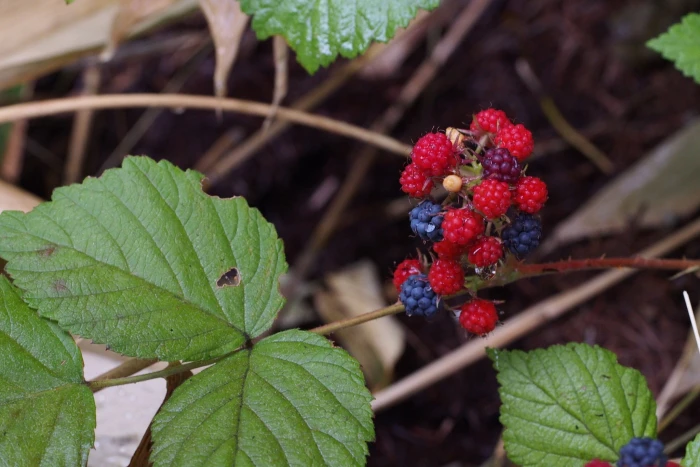African Blackberry
(Rubus mesogaeus)
African Blackberry (Rubus mesogaeus)
/
/

harum.koh
CC BY-SA 4.0
Image By:
harum.koh
Recorded By:
Copyright:
CC BY-SA 4.0
Copyright Notice:
Photo by: harum.koh | License Type: CC BY-SA 4.0 | License URL: http://creativecommons.org/licenses/by-sa/4.0/ | Rights Holder: harum.koh | Publisher: iNaturalist | Date Created: 2014-07-27T06:07:15-07:00 |

















Estimated Native Range
Climate Requirements for Chicago Heights, Illinois
| This Plant | Your Site | Plant Suitability for Your Location | ||
|---|---|---|---|---|
| • Precipitation | 6" - 174" | 38" | Aquatic | Aquatic |
| • High Temp. | 53°F - 92°F | 85°F | Your summer temperatures are normal for this plant. | Excellent |
| • Low Temp. | -1°F - 64°F | 14°F | Your winter temperatures are normal for this plant | Excellent |
This plant should grow well at your location with about N inches per year (Y minutes per month) of irrigation.
Summary
Rubus mesogaeus, commonly known as African Blackberry, is a deciduous shrub native to the eastern Himalayas extending to China and Japan. It typically grows to a height of 3-6 feet (0.9-1.8 meters) and is characterized by its arching stems and prickly thorns. The shrub produces white flowers that bloom in the spring and summer, which are moderately showy and attract pollinators. The foliage is a deep green, adding to the plant’s aesthetic appeal.
African Blackberry is valued for its fruit production and as a natural barrier due to its thorny stems. It is suitable for creating wildlife-friendly hedges or as part of a mixed border in residential gardens. While it thrives in full sun to part shade, it is adaptable to a range of soil types, including clay, loam, and sandy soils, provided they offer medium to fast drainage. Regular watering is necessary, but the plant is relatively drought-tolerant once established. Gardeners should be cautious, as Rubus mesogaeus can become invasive outside its native range, spreading through both seed and root suckers. It is advisable to check local regulations and consider containment strategies if planting in non-native areas.CC BY-SA 4.0
African Blackberry is valued for its fruit production and as a natural barrier due to its thorny stems. It is suitable for creating wildlife-friendly hedges or as part of a mixed border in residential gardens. While it thrives in full sun to part shade, it is adaptable to a range of soil types, including clay, loam, and sandy soils, provided they offer medium to fast drainage. Regular watering is necessary, but the plant is relatively drought-tolerant once established. Gardeners should be cautious, as Rubus mesogaeus can become invasive outside its native range, spreading through both seed and root suckers. It is advisable to check local regulations and consider containment strategies if planting in non-native areas.CC BY-SA 4.0
Plant Description
- Plant Type: Shrubs
- Height: 3-6 feet
- Width: 4-6 feet
- Growth Rate: Moderate
- Flower Color: N/A
- Flowering Season: Spring, Summer
- Leaf Retention: Deciduous
Growth Requirements
- Sun: Full Sun, Part Shade
- Water: Medium
- Drainage: Fast, Medium
Common Uses
Edible*Disclaimer: Easyscape's listed plant edibility is for informational use. Always verify the safety and proper identification of any plant before consumption., Low Maintenance
Natural Habitat
Native to savannas, forest margins, and grasslands of East Asia
Other Names
Common Names:
Scientific Names: Rubus mesogaeus , Rubus eous , Rubus euleucus , Rubus gracilis , Rubus gracilis var. microcarpus , Rubus hypargyrus var. niveus , Rubus idaeus var. exsuccus , Rubus illudens , Rubus kinashii , Rubus kinashii subsp. macrophyllus
GBIF Accepted Name: Rubus mesogaeus